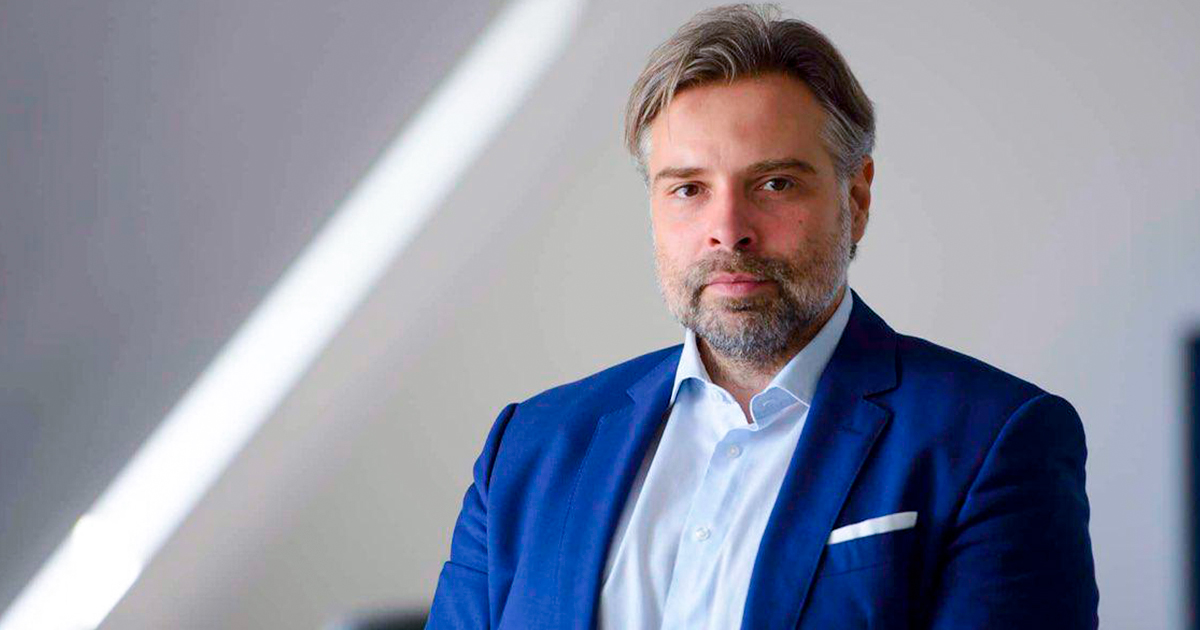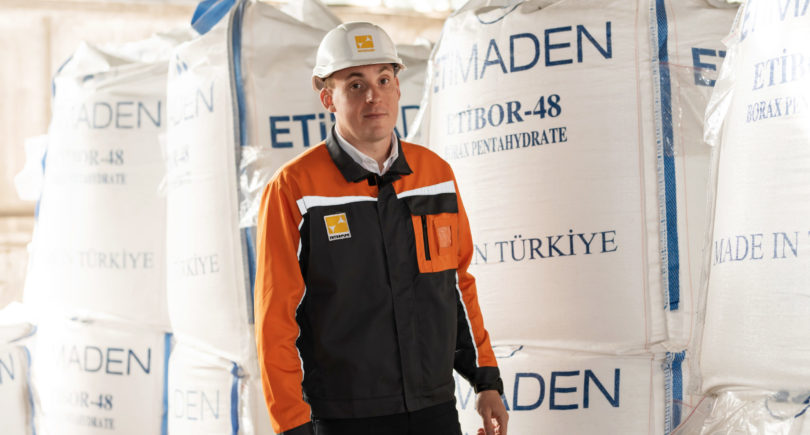
Interviews war 7142 06 September 2022
President of Ukrmetalurgprom – about the current situation in the industry and its prospects
The military aggression of the Russian Federation against Ukraine caused significant damage to the entire economy of the country. At the same time, the mining and metals industry is currently the most affected.
The destruction of two steel plants in Mariupol, difficulties with the delivery of materials and the export of products to all other enterprises of the industry, the deterioration of the price situation on the world markets, the increase in energy prices – all this together hit the industry hard. Oleksandr Kalenkov, the president of the Ukrmetalurgprom enterprises’ association told about this in an interview with GMK Center.
What is the current situation at iron and steel industry? What are the main problems facing the industry?
– The biggest problem is, of course, the war on our land. And the main and most painful thing is the loss of employees of our enterprises, who die at the front and as a result of shelling of residential buildings and other civilian objects. Ensuring the safety of employees is a top priority today for iron and steel industry’s companies.
From the economic point of view, no other industry in Ukraine suffered as a result of military operations as much as iron and steel industry. For understanding: two steel giants in the now occupied and bombed Mariupol together produced more than 40% of steel in the country.
Businesses that continue to operate today are on average 15% loaded. In 7 months of 2022, the plants produced 4.82 million tons of steel. This is 62% less compared to the same period in 2021. But the industry worked more or less normally in January and almost all of February. Azovstal, Ilyich Iron and Steel Works of Mariupol were still working then and without shelling of the regions where production is located.
As for exports, the proportion has not changed – we send 80% to foreign markets, although the amounts have fallen significantly. In January-July 2022, we exported 3.4 million tons of steel products (a drop of 62%). But the exports geography has changed due to the blocking of ports – the share of EU countries has increased from pre-war 32% to 51%.
Mining and processing plants were loaded more by the end of June 2022, by about 70%, but since July 2022 they have been operating at 25% capacity. Inguletsky, Pivdenny minings, as well as ArcelorMittal Kryvyi Rih mining temporarily stopped work. This is both due to the drop in production at steel plants and due to changes in the global price situation – prices for iron ore and steel products have fallen by approximately 35% and 30%, respectively, since the beginning of 2022.
The mentioned problems are superimposed on the growth of electricity and logistics costs. I would also like to remind that our plants and minings are located in frontline cities and are constantly under threat of shelling. Therefore, the safety of employees, I emphasize once again, is a priority today.
The industry has been operating at a loss for a long time, there is no question of making a profit now. Revenues allow to cover only 50-80% of variable costs of enterprises.
How successfully do mining and metals industry’s companies solve their logistics problems?
– In comparison with the pre-war year, expenses of mining and metals companies on logistics increased by 4-6 times in general, depending on the products and enterprises. We sent more than 60% of all exports through ports that have been closed to mining and metals industry since the beginning of the war. It is two to three times more expensive to transport products through Ukraine to the western borders than to the ports. But after crossing the border, it is still necessary to transport goods through the territory of other countries, then transship them in European ports.
There are serious problems at the border crossings. In addition to the fact that the track in Europe has a different width, our railway infrastructure is not able to handle the flow of goods, which has increased significantly. There are calculations by state institutions, which indicate that the throughput capacity of crossings on the western border can be increased by 2 times with small investments. Why are they delaying solving this problem – a question for our officials.
Enterprises are doing everything they can to support production and save jobs for thousands of Ukrainians and to pay them salaries. To do this, we need to export as much as we can and with as little expense as possible.
And how did the 70% increase in railway tariffs affect the industry?
– I would mention not only the recent ones, but also all the tariff changes of the monopolistic carrier over the last year. Due to several increases in railway tariffs from September 2021, the cost of transporting iron ore and coal has increased by almost 2.5 times. Tariffs for the transportation of steel products, which were already transported in the most expensive class, were increased by 70% from July – this was the largest one-time increase in the entire history of Ukrainian Independence. In addition, Ukrzaliznytsia (UZ) increased the cost of using its own raicars. At the same time, the cost of mining and metals cargo transportation is lower compared to many other types of cargo, since fewer stations are used. Naturally, such a sharp increase in tariffs had a negative impact on the industry, because logistics costs had already increased due to closed ports.
Has the UZ’s work changed after the tariff increase? Have the terms of railcars delivery, speed of trains improved?
– Nothing has changed for the better, for the worse – something changed: railcars with mining and metals products have been standing for weeks on the way to border crossings through bottlenecks on our railway.
On the other hand, we understand the situation in which Ukrzaliznytsia found itself. Conditionally constant costs of the state carrier remained approximately at the same level as before the end of February and further reduction of transportation. In addition, now the Ukrzaliznytsia carries out other important functions. But raising tariffs during war is an extremely unreasonable decision. It would be reasonable to support the UZ through financial assistance from international partners, given the current situation and the role of Ukrzaliznytsia, which has become, in fact, a semi-military enterprise.
What types of materials does the industry lack? Is there a shortage of coking coal?
– Now there is no shortage of coking coal. But this is mainly because steel enterprises, as I have already said, work at minimum capacities. Also, today there are no problems with providing steel plants with scrap metal, although the amount of scrap procurement has fallen. The fact is that the regions, which are now temporarily occupied or are on the front line, traditionally provided up to 50% of all scrap procurement in the country. For obvious reasons, the collection of secondary raw materials there is now much more difficult. Therefore, there are fears that after the renewal and increase of production, enterprises may face a shortage of scrap metal.
Are there risks of stopping gas supplies in winter?
– It is necessary to take into account the drop in production at enterprises and, accordingly, the decrease in demand for energy. Therefore, we do not see any possible problems with gas supply yet. But we understand that in the event of a cold winter and possible gas blackmail from the Russian Federation, the state’s priority will be heating housing and social infrastructure, but not supply to industry.
Does the government now understand that the industry is in crisis, that it needs some support measures? Is there a dialogue with the government about revising the calculation mechanism or rent rates for iron ore mining?
– As before the war, today we try to maintain communication with the authorities. But if in Europe, important decisions are made taking into account the interests of enterprises that are fundamental to the economy, then our officials, unfortunately, proceed from other, not always understandable and explained, considerations. For example, the Ministry of Infrastructure made a decision to increase UZ’s tariffs by 70% within a few days, without any discussion with the industry. And many learned about this decision only post factum.
In July, we appealed to the President, the Cabinet of Ministers and deputies with a proposal to implement a number of measures that will make it possible not to reach zero in terms of profit, but only to reduce the losses of enterprises. So that we can continue operating longer and save jobs.
The list of proposals is small. This is a reduction of UZ’s tariffs for freight transportation by 50% for raw materials and by 70% for steel products, as well as a reduction in the tariff for electricity transmission. We also proposed to zero out the rent for the extraction of iron ore during the war (enterprises are already operating at a minimum, accordingly, rent payments have also decreased, and in the event of an production and exports increase, the state will receive more other taxes, more currency, and will increase the load on the state UZ). During the war, taxes on CO2 and other emissions should be abolished.
According to our calculations, as a result of the production, the freight transportation and exports increase, which will be facilitated by the measures mentioned above, Ukraine will save 174 billion UAH of GDP, and the state budget will receive an additional 35 billion UAH. The mining and metals enterprises will increase their margin of safety and will be able to survive until the end of the war.
Is there a problem with returning VAT to industry’s enterprises?
– Starting from the first month of the war, there were colossal problems with VAT reimbursement. Not only at the mining and metals enterprises, but also at all exporters. Reimbursement began in June, but literally in a month this process was sharply slowed down. In July 2022, Ukrainian exporters were reimbursed only 0.6 million UAH of VAT, while in June – 9.5 billion UAH. At the same time, the VAT paid by exporters in July increased from UAH 21 billion to UAH 35 billion in June 2022. Taking into account the fact that mining and metals enterprises are export-oriented, we send 80% of products to foreign markets – non-reimbursement of VAT deprives the business of a huge part of working capital.
Do you think it is possible to open sea ports for mining and metals cargoes by the end of the year?
– This would be a breakthrough, since the current crisis in the industry is largely related to logistics, which has become more expensive due to the forced redirection of exports. Our international partners could contribute to this. Turkey, which has repeatedly declared its readiness to be a mediator in negotiations, is definitely interested in resuming maritime supplies of mining and metals products from Ukraine.
But at the same time, effective diplomatic work must be carried out on the Ukrainian side as well. After all, the restoration of exports by sea is primarily beneficial for our economy. Sending steel products to foreign markets gives by 1.5 times more foreign currency than agricultural products, which began to be exported as part of the grain agreement. The opening of ports for mining and metals cargoes will also make it possible to stabilize the hryvnia exchange rate, as, according to preliminary estimates, it will ensure an additional $600 million inflow to the country every month.
As you have already said, during the summer, minings were stopped and steel enterprises reduced production. What results do you expect at the end of 2022?
– If at the end of July 2022 we produced 4.8 million tons of steel, then by the end of the year, taking into account the 85% underutilization of enterprises, we expect approximately 6.5-7 million tons. In the current conditions, unfortunately, we should not expect more.
Is state orders for steelmakers possible in the conditions of post-war recovery?
– The state order may be, but I don’t think we should count on it much. In general, the post-war recovery of Ukraine will require huge investments, this is a good opportunity to significantly increase domestic steel consumption from the pre-war 5 million tons to at least 15 million tons. I am sure that domestic producers will be able to fully meet the needs of Ukraine for the period of recovery and the following years of economic development. But for this, our industry should persevere to victory.





